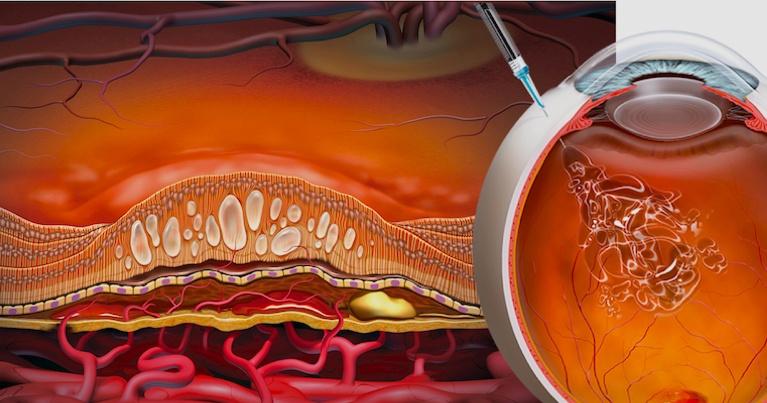Pfizer Inc. Leads the Charge: Novel Anti-VEGF Compounds for Improved Patient Outcomes

Understanding Anti-VEGF Treatments: Innovations and Insights
What Are the Side Effects of Anti-VEGF Injections?
Anti-VEGF (Vascular Endothelial Growth Factor) injections are widely used to treat retinal diseases such as age-related macular degeneration (AMD) and diabetic retinopathy (DR). While these treatments can significantly improve visual outcomes, patients often inquire about their potential side effects. Common side effects may include:
Injection Site Reactions: These can manifest as redness, swelling, or discomfort at the injection site.
Vision Disturbances: Some patients report temporary visual disturbances post-injection.
Intraocular Pressure Increases: Rarely, these injections can lead to elevated intraocular pressure, necessitating monitoring.
Endophthalmitis: Though extremely rare, this serious infection can occur post-injection, emphasizing the importance of sterile techniques during administration.
Awareness of these side effects can help patients and healthcare providers better manage expectations and address concerns.
What Are the Advantages of Using Biosimilar Anti-VEGF Medications?
The emergence of biosimilar anti-VEGF drugs offers significant advantages in the treatment landscape. These biosimilars, which mimic the original biologic therapies, provide benefits such as:
Cost-Effectiveness: Biosimilars tend to be more affordable than their reference products, increasing accessibility for patients.
Similar Efficacy and Safety: Clinical studies demonstrate that many biosimilars, like Cimerli (ranibizumab-eqrn) and Byooviz (ranibizumab-nuna), maintain comparable efficacy and safety profiles to their branded counterparts.
Increased Treatment Options: The availability of multiple biosimilars allows healthcare providers to tailor treatment plans based on individual patient needs and financial considerations.
As the market for biosimilars grows, healthcare professionals are encouraged to stay informed about their applications and benefits.
What Recent Advancements Have Been Made in Anti-VEGF Therapies?
The field of anti-VEGF therapy is rapidly evolving, with numerous advancements and technologies emerging to enhance treatment efficacy and patient convenience. Some notable innovations include:
Port Delivery System (PDS): Developed by Roche, this implantable device allows for extended release of ranibizumab, potentially reducing the frequency of injections to once every six months.
Gene Therapy Approaches: Trials for gene therapies like ADVM-022 from Adverum Biotechnologies show promise in reducing the need for repeated anti-VEGF injections, with some patients experiencing substantial reductions in treatment burden.
Combination Therapies: Companies like Regeneron are exploring the synergistic effects of combining anti-VEGF therapies with other treatments, such as steroids, to improve outcomes for patients with complex conditions like diabetic macular edema.
These advancements highlight the ongoing commitment of the industry to improve patient care and outcomes through innovative technologies.
How Effective Are Anti-VEGF Treatments for Diabetic Macular Edema?
Diabetic macular edema (DME) is a leading cause of vision loss among individuals with diabetes, and anti-VEGF treatments have emerged as a crucial intervention. Research indicates that these therapies can lead to significant improvements in visual acuity and reductions in macular thickness. Key points include:
Clinical Efficacy: Studies show that anti-VEGF injections can lead to visual acuity improvements in the majority of DME patients.
Reduced Treatment Frequency: Innovative delivery systems, such as the Port Delivery System, may reduce the frequency of required injections, improving patient adherence and convenience.
Widespread Acceptance: As more healthcare professionals recognize the effectiveness of anti-VEGF therapies in treating DME, these treatments are becoming standard practice.
Top Companies Innovating in Anti-VEGF Treatments
Leading pharmaceutical companies are at the forefront of developing innovative anti-VEGF therapies:
Regeneron Pharmaceuticals: Known for Eylea (aflibercept), Regeneron is exploring new delivery mechanisms to extend treatment intervals.
Novartis AG: With a focus on advancing the understanding of retinal diseases, Novartis is developing new formulations and combination therapies.
Roche: The introduction of the Port Delivery System marks a significant leap in reducing injection frequency.
Bayer AG: Bayer continues to innovate in the anti-VEGF space with its product Eylea, enhancing treatment protocols and patient outcomes.
Allergan plc: A subsidiary of AbbVie, Allergan focuses on maintaining efficacy in its anti-VEGF treatments through ongoing clinical trials.
Pfizer Inc.: Pfizer is investigating novel anti-VEGF compounds and treatment methodologies, expanding the therapeutic options available to patients.
Bausch Health Companies Inc.: Bausch is committed to enhancing patient access to effective anti-VEGF therapies through cost-effective solutions.
AbbVie Inc.: With an emphasis on improving delivery systems, AbbVie is enhancing the therapeutic landscape for retinal diseases.
Santen Pharmaceutical Co., Ltd.: This company focuses on ocular-specific treatments and is expanding its portfolio in the anti-VEGF domain.
Alcon Inc.: Alcon is leveraging its expertise in eye care to develop innovative anti-VEGF solutions that cater to diverse patient needs.
For more information visit at MarketResearchFuture
Other Trending Reports
- Art
- Causes
- Crafts
- Dance
- Drinks
- Film
- Fitness
- Food
- Jeux
- Gardening
- Health
- Domicile
- Literature
- Music
- Networking
- Autre
- Party
- Religion
- Shopping
- Sports
- Theater
- Wellness
- IT, Cloud, Software and Technology


